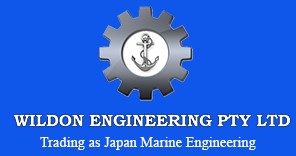Compliance Level in Diesel Engine Emissions: What Makes Yanmar Stand Out?
Blog | May 1st, 2019Yanmar’s executive branch can feel the global pulse accelerating. Their directors know that they have a duty to uphold the internationally sanctioned emissions laws that are being launched right now. As a world protecting response to a recognized environmental malady, they know they have the power, the influence to make significant changes. Many large seagoing vessels, and their smaller cousins, too, are propelled by Yanmar diesel engines, after all.
Answering a Call to Action
Every little bit counts, as they say when a challenge threatens. And that’s true, to a certain extent at least. To some degree, every marine engine manufacturer can make architectural changes to their wares so that worldwide emissions experience a sizeable drop. However, since Yanmarpowerplants are broadly in use on a great number of boats, a decision by this iconic engine manufacturer to support the latest, most stringently authored emissions standards will have more impact. Granted, rules are rules, and those standards must be obeyed. Still, if Yanmar engineers were to dedicate its resources, were to provide the means and wherewithal that would reduce greenhouse gas production at sea, then the effects of this resolution would ripple far-and-wide, across and around the globe.
A Path to Meeting the Compliance Levels
Pages of descriptive text illustrate Yanmar dedication. The internationally recognized marine diesel engine manufacturing company is investing in our globe’s future. Next, action follows on from passion-filled advocacy. That is to say, the stringent emissions requirements filter their way down to the engineering department, where they begin to influence engine blueprints. Instead of a direct exhaust-to-atmosphere channel, an extra engine stage takes control of the waste. The EGR (Exhaust Gas Recirculation) stage feeds a portion of the exhaust back to the combustion chamber. Nitrogen Oxide emissions (NOx) fall as combustion temperatures drop. And here’s what makes Yanmar stand out as an absolutely committed environmental caretaker. For EGR mechanism can sometimes introduce other atmospheric contaminants. Particulate matter contamination is one issue, then there’s a rise in CO gases. Following through on their emissions reduction solutions, Yanmar has implemented a second wave of engine modifications.
Electronically-controlled and optimized fuel injection technology supports EGR on Yanmar marine engines. As a result of this architectural overhaul, fuel economy figures rise while nasty greenhouse gasses are processed out of the exhaust stream. Ultimately, just by seeing these modifications in action, ship engineers can instantly see how Yanmar has prioritized greenhouse gas reduction methods. Already sure to meet the Tier 3/Stage IIIA emissions standards, the next goal is to go attain Tier 4/Stage IIIB compliance, at which point PM and NOX emissions will drop even lower.
Optimized by NetwizardSEO.com.au
Recent Posts
- Yanmar Propulsion Systems: FPP vs CPP Propellers for 6EY and 6N Series Fuel Efficiency
- Mitsubishi K.K. Purifier Separator: The Key to Cleaner Fuel and Smoother Operations
- Kemel Air Seal Retrofits: Leak-Free Stern Tube Seals and Reduced Lube-Oil Risk
- Yanmar Auxiliary Generators: Sizing for Reefers, Hotel Loads, and Dynamic Positioning Systems
- Water Lubricated Stern Tube Bearing (EVR): Proven Technology for Smooth and Quiet Operations
- Marine Spare Parts Australia: Genuine Components for All Vessel Types
- Yanmar Diesel Generators – Powering Remote and Off-Grid Operations
- Authorised YANMAR Parts Supplier in Australia – Genuine Components Guaranteed
- Ship Maintenance Parts: Global Procurement Solutions for Medium to Large-sized Commercial Vessels
- Yanmar Parts Online Australia – Genuine Yanmar Spare Parts at Competitive Trade Prices
